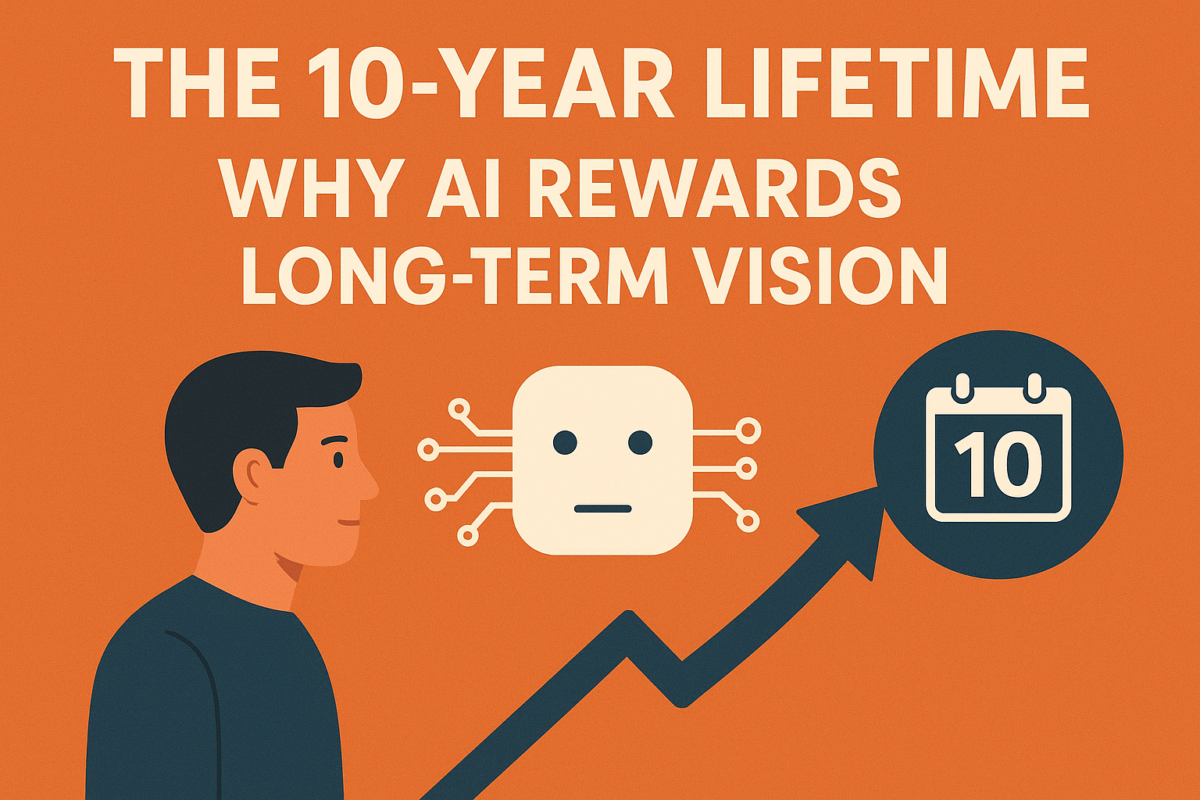We’re entering an era where the math of creative output has fundamentally changed. What once took a career spanning decades can now be compressed into ten focused years. But there’s a catch that most people miss: AI doesn’t reward dabblers. It amplifies dedication.The Compression of Creative CapacityConsider what a productive writer might accomplish in a traditional career. Perhaps 20 books over 40 years, alongside hundreds of articles, essays, and shorter works. Or a filmmaker producing 15 feature films across their lifetime. A software developer building a dozen significant applications.With AI as a collaborator, these timelines collapse. The bottleneck shifts from execution to vision. You can draft that book in weeks instead of years. Prototype that app in days instead of months. Generate visual concepts in hours instead of weeks. But here’s what changes everything: the quality bar doesn’t drop. In fact, it rises, because you’re competing with everyone else who has access to the same tools.
Why Vision Becomes the Differentiator
When everyone can execute quickly, what separates memorable work from noise? The answer is surprisingly traditional: a coherent long-term vision and deep understanding of what people actually need.
AI excels at tactics but knows nothing about strategy. It can write a chapter but doesn’t understand why your book needs to exist. It can generate code but can’t tell you what problem is worth solving. It can create images but has no thesis about what story needs telling.The people who will do a lifetime’s work in ten years aren’t the ones chasing every shiny trend or pivoting with each new model release. They’re the ones who know exactly what they’re building toward and use AI to get there faster.
The Dedication Paradox
Here’s the counterintuitive reality: AI makes dedication more important, not less. When you can produce ten times faster, the question becomes: produce what? Random experimentation yields random results, just at higher velocity. But focused effort on a clear vision? That’s when compression becomes transformation.Think about it this way. If you have a vague idea and three months, AI helps you make something mediocre quickly. If you have a crystallized vision and dedicate ten years to producing valuable things for a specific audience, AI helps you build a body of work that would have previously taken a full career.
The tool rewards clarity. It rewards knowing your audience deeply. It rewards having strong taste and judgment about what’s worth making. All things that only develop through sustained commitment.
Producing Things for People
The phrase “producing things for people” matters here. Not producing things for algorithms, or for your portfolio, or to demonstrate AI capabilities. For actual humans with actual needs.AI makes it tempting to optimize for quantity and novelty. But the work that compounds over a decade isn’t the work that chases attention. It’s the work that solves real problems, that makes people’s lives genuinely better, that builds trust through consistency and quality.
When you have a ten-year vision centered on serving a specific group of people, every AI-accelerated project becomes part of a larger whole. The book informs the workshop. The workshop informs the software tool. The tool generates insights for the next book. It compounds.
The New Career Mathematics
If we accept the premise that AI can 10x certain types of creative and knowledge work, the career calculation changes entirely:
Years 1-3: Building deep expertise in your domain and understanding your audience while learning to collaborate effectively with AI
Years 4-7: Producing prolifically, with AI handling execution while you focus on direction, curation, and refinement
Years 8-10: Synthesizing everything into comprehensive systems, frameworks, or bodies of work that would traditionally take 30+ yearsBut this only works if you know where you’re going. The person who spends those ten years chasing whatever seems interesting that week ends up with a scattered catalog of unrelated work. The person with a long-term vision ends up with a legacy.
The Bottleneck Becomes You
Here’s what makes this both exciting and demanding: you become the bottleneck. Not your typing speed, not your rendering capacity, not your ability to research. Your judgment. Your taste. Your understanding of what matters. Your vision for what should exist.AI removes the excuses. Can’t write fast enough? Not anymore. Can’t afford designers? Not anymore. Can’t prototype without a team? Not anymore. What’s left is the question: do you know what’s worth building? And are you willing to dedicate a decade to building it?
Starting Your 10-Year LifetimeIf you’re considering embarking on this compressed career:
Ask yourself what you want to be known for a decade from now. Not what skills you want to learn or what technologies you want to master, but what you want to have produced for people. What problems you want to have solved. What audience you want to have served.Then work backward. What needs to exist to serve that vision? What’s year one, year three, year seven? AI will help you execute each piece faster than ever before, but only if you know what pieces need to exist.
The opportunity isn’t to do random things 10x faster. It’s to do intentional things that compound over time, building toward a body of work that serves people and stands for something.The next ten years might equal what used to take a lifetime. But only if you bring the vision, the dedication, and the commitment to producing things that actually matter.
The tools are ready. The question is: are you?

